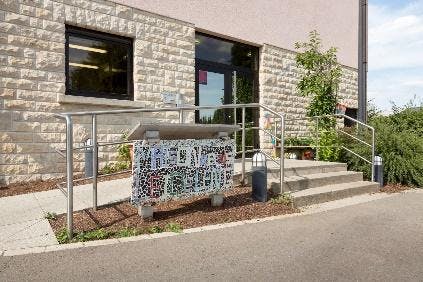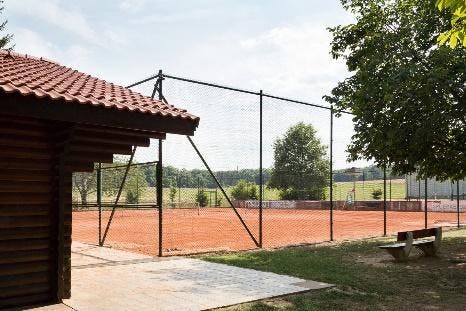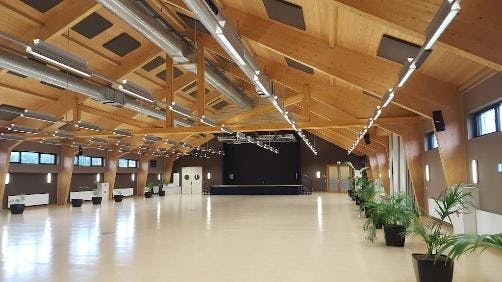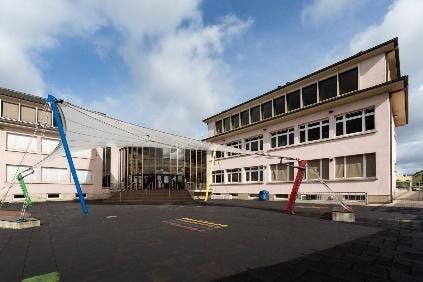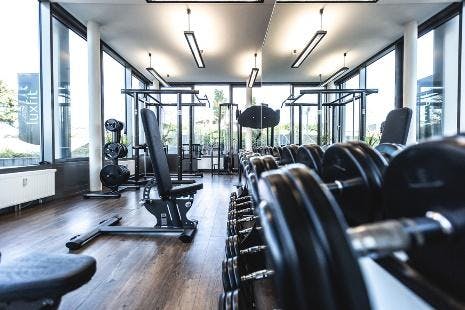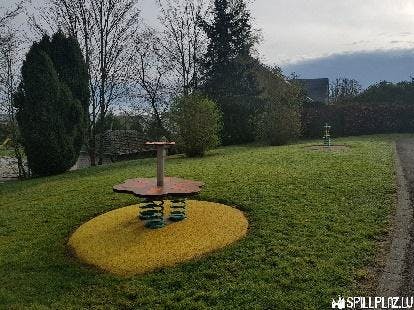
Leudelange commune: an affordable living connected to the capital
The Leudelange commune, situated in the canton of Esch-sur-Alzette, graces the southwestern landscape of Luxembourg City. In this article, we will explore its population, weigh the pros and cons of residing in Leudelange, check the area's transport accessibility, and more.
Nestled to the north of Bertrange, northeast of the Merl and Cessange districts, southeast of Roeser, south of Bettembourg and Mondercange, and west of Reckange-sur-Mess, Leudelange demonstrates a unique presence on the Luxembourg map.
General characteristics of Leudelange commune
Leudelange is a town named after its own central area. Most of its buildings and busy places are in the center, while the areas around it have lots of farms and trees. It's become a comfortable neighborhood that feels like a small town but can be easily reached to and from Luxembourg City.
You can drive to the capital via the N4 road or the A4 expressway, which are very handy. What's more, those living in Leudelange make quite a bit of money averaging 12,518 euros per month, making it the second wealthiest area in the country, right after Niederanven.
Population of the commune
As of January 1, 2023, Leudelange had a population of 2,766 residents, ranking 59th among the 102 communes in the country. This population constitutes 0.42% of the national total. In terms of land area, Leudelange covers 13.57 km², making it one of the smaller communes and placing it at the 84th position among the 102 communes in the country.

Transport accessibility
Leudelange enjoys excellent connectivity through various modes of transportation, making it conveniently accessible for residents and visitors alike.




You can check in detail all the transportation options on the transportation page of the Leudelange commune or get detailed instructions to get from one point to another on mobilitet.lu and its route planner.
Renting and buying real estate
Leudelange presents an appealing residential option, offering a village-like ambiance away from the hustle of the capital yet conveniently close, and with significantly more affordable prices.
The purchase prices stand at 7,977 euros/m², nearly half of the capital's average at 12,243 euros/m². Rental rates are equally attractive at 20.56 euros/m², well below the capital's average of 30.72 euros/m². This makes Leudelange an attractive choice for those seeking a tranquil living environment with economic advantages compared to the bustling city.
For buying the average price is
For renting the average price is
Applications, search, and profound advice in our guide to renting
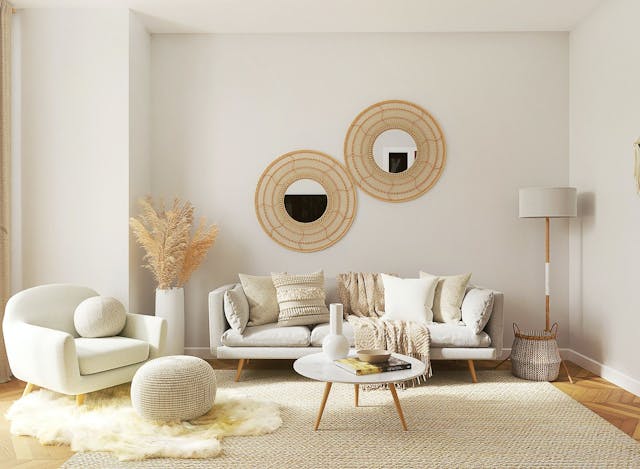
Infrastructure of the commune
While Leudelange's infrastructure provides essential elements for daily life, it stands distinct from the extensive offerings of the capital. The town features a multifunctional hall primarily used for sports and cultural activities, alongside two tennis courts courtesy of the Tennis Club Leideleng. For healthcare needs, the presence of a general practitioner, dentist, and physiotherapist ensures local medical support.
In terms of shopping, the town accommodates various needs with notable establishments such as the Smatch supermarket, Möbel Alvisse for furniture, and Fachmaart Robert Steinhäuser for tools and home improvement supplies.
Place to call home
If you're considering making Luxembourg your new home, we encourage you to explore our range of articles that look in depth at the different city communes and neighborhoods.
Pros and cons of living in the Leudelange commune
Leudelange's location offers an ideal blend, situated within a short distance from the capital and seamlessly connected via the N4 national road and A4 highway.
Notably, the real estate market stands out, providing affordable options with purchase prices nearly half of the capital's average and rental rates considerably below the city's norm.
What can you find in this commune?
With a population of 2,766, Leudelange secures the 59th position in the Grand Duchy in terms of population, while its compact size places it among the smaller communes, ranking 84th out of 102 within the country in terms of size. Leudelange harmoniously combines rural charm with urban accessibility, creating a well-balanced experience for its residents, even despite its somehow limited access to amenities.
Primary schools and nurseries
Leudelange offers a public primary school and a Maison Relais for childcare, ensuring a foundational education and a secure environment for children. For younger children, multiple daycare options are available, including Les P'tits Bouchons, Rockids, Petit Pouce, Les P'tits Choux, Catiminis, and Les P'tits Tigrous, providing a variety of choices for parents.
Primary School
Maison Relais
Les P'tits Bouchons Nurseries
Rockids Leudelange Nuersery
Petit Pouce Leudelange Nursery
Les P'tits Choux Nursery
Catiminis Nursery
Les P'tits Tigrous Nursery
Secondary education
However, the lack of secondary schools in Leudelange necessitates a journey to the capital for access to high school education and university-level studies, emphasizing a current limitation in the local educational landscape.
The primary cultural hub in Leudelange is the Cultural and Social Center "An der Eech," which opened its doors in 2010.
Cultural and Social Center
Leudelange Youth House
Church
Learn more about Luxembourg's culture and traditions in our special guide.
In Leudelange, healthcare services include several general practicioners, dentists and other personal helthcare specialists, which you can find locally with Doctena. Additional medical professionals and specialists are accessible in neighboring areas and the capital.
The closest pharmacies are located in Bertrange and Gasperich (Luxembourg City), ensuring residents have convenient access to essential healthcare resources.
You can read more about urgent healthcare in our dedicated article: Emergency medical help in Luxembourg: ambulance and hospitals.
While Leudelange may not feature large-scale parks, the commune embraces nature with numerous green areas. Seven playgrounds are strategically dispersed throughout the neighborhood, providing children with recreational spaces. The Spillplaz website conveniently details the locations and features of each playground.
Expansive green spaces on the outskirts of the urban center offer nature enthusiasts multiple paths and trails to explore. Visit Luxembourg provides information on one such route, allowing residents and visitors to immerse themselves in the natural beauty surrounding Leudelange.
Since 1982, Leudelange has had a big hall for all kinds of sports. Local groups get first dibs, and a lot of the time is for school sports, including weekly practice for elementary kids through the League of Sports Associations for Primary Education also known as LASEP. The big room is 25 x 45 meters for different sports, and there's a smaller room just for table tennis. Upstairs, there are three rooms for local groups to meet.
Besides the sports hall, Leudelange has two tennis courts at "Am Weiher," made by the Tennis Club Leideleng. For gym and strength training fans, there are two gyms: Luxfit and Iron Bodyfit, serving different workout tastes in the community.
Hall Omnisport
Tennis courts
Luxfit
Iron Bodyfit
Leudelange boasts a variety of shops, ranging from small boutiques to larger establishments. For grocery needs, the Smatch supermarket on Rue Léon Laval is a convenient option. For specialized purchases, Möbel Alvisse offers a diverse range of furniture, while Fachmaart Robert Steinhäuser is a go-to for tools, DIY supplies, and home improvement essentials. The town's shopping landscape caters to a broad spectrum of needs, providing residents with convenient options for daily essentials and specialty items.
Match Leudelange
Möbel Alvisse
Fachmaart Robert Steinhäuser
Get in, we are getting shopping
Find out more about Luxembourg shopping malls in our dedicated article.
Historical overview
Leudelange, despite being one of Luxembourg's oldest localities, historically received minimal attention due to its remote location surrounded by forests. The Luxembourgish name "Lëdeleng" reflects its isolation, possibly originating from the Frankish "clan des Liutilon." Roman traces, such as the road called "Kiem," hint at early settlements, with a well-preserved Roman stone bearing four goddesses discovered during the construction of the parish church.
Medieval times
Middle ages and farms
Reorganization
20th century and developement
Today, Leudelange is renowned for its industrial zones, hosting diverse businesses. Its rich history, from Roman origins to modern prosperity, reflects a resilient commune that has adapted and flourished over the centuries.
Frequently Asked Questions (FAQ)
What healthcare facilities are available in Leudelange?
Leudelange provides essential healthcare services with a general practitioner, Dr. Pia Gabriel, a dentist, Dr. Pierre Becker, and a physiotherapist. While these professionals cater to immediate medical needs, additional doctors and specialists can be found in neighboring areas and the capital. Pharmacies in Bertrange and Gasperich, Luxembourg City, offer convenient access to medications and healthcare essentials.
Are there parks and playgrounds in the commune?
Although Leudelange lacks large-scale parks, it compensates with green spaces and seven well-distributed playgrounds for children. Spillplaz, a helpful resource, outlines the locations and features of each playground. Additionally, expansive green areas on the outskirts provide nature enthusiasts with various paths and trails, offering a serene environment for outdoor activities.
How is the shopping scene in Leudelange?
Leudelange offers a diverse shopping experience, featuring everything from small boutiques to larger establishments. For groceries, the Smatch supermarket on Rue Léon Laval is conveniently located. Specialty needs are met with Möbel Alvisse for furniture and Fachmaart Robert Steinhäuser for tools and home improvement supplies. While not comparable to the capital, the town's shopping landscape caters to various needs.
How does the cost of living compare to the capital of Luxembourg?
Source: fr.wikipedia.org, www.leudelange.lu, www.leudelange.lu, www.leudelange.lu, inter-actions.lu, www.leudelange.lu, www.visitluxembourg.com, www.ironbodyfit.lu, luxfit.com, www.alvisse.lu, www.steinhauser.lu, www.immotop.lu
We took photos from these sources: Unsplash, Leudelange commune website, Google Maps, Spillplaz, Luxfit
